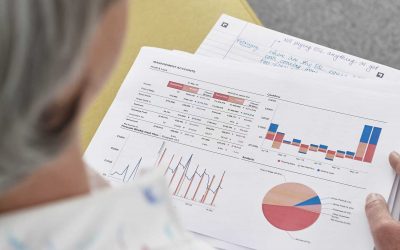[et_pb_section fb_built=”1″ admin_label=”section” _builder_version=”3.22″][et_pb_row admin_label=”row” _builder_version=”3.25″ background_size=”initial” background_position=”top_left” background_repeat=”repeat”][et_pb_column type=”4_4″ _builder_version=”3.25″ custom_padding=”|||” custom_padding__hover=”|||”][et_pb_text admin_label=”Text” _builder_version=”3.27.4″ background_size=”initial” background_position=”top_left” background_repeat=”repeat”]
It’s finally here: the 4th of July, the day the reawakening begins!
There’s been all sorts of work to adapt operations to make them “Covid secure” – hand sanitiser, face masks, physical distancing, etc. But as well as the practical/ physical preparations, reopening is likely to present financial challenges.
Does this sound counter intuitive? Surely the financial issues came from trying to keep going when there were no sales? When the customers start spending again surely the trouble is over??
I’ve warned before about the cash flow challenges that are likely to hit businesses over the next 12 months so what can you do to create a plan that shows you where the risks are in your own business?
When you make a cashflow forecast it’s not that dissimilar from a P&L forecast – lots of the same headings, but the key thing about cashflow is when the transactions happen.
Usually it feels difficult to run a cashflow forecast more than just a couple of months ahead: there starts to be a lot of assuming which can make the exercise seem pointless.
However a good forecast fulfils two different functions: over the next few months you need a detailed plan; weekly or even daily, to reveal any unexpected potholes along the road. But over the longer term you need to be looking out over at least the next year or two to see what risks you may potentially face in the future as you implement your strategy.
This is especially important right now if you have taken on additional borrowing to see you through this period and also given that you may have pre-Covid tax bills to pay in the latter part of this year.
What do you need to include in your forecast? To start off with look at what’s going on in the P&L; when do you expect customers to pay and when do you plan to pay suppliers.
Some payments will happen monthly, some quarterly and some less frequently than that, so it’s important to try to capture the likely timing.
Right at the moment it’s probably worth thinking about how you’d be affected if some customers start taking longer to pay. Does that change the way you think about pricing? Is it worth offering discounts for prompt payment or taking on extra charges to be able to collect payments by direct debit?
Next on my checklist is loan and HP repayments.
These don’t appear on the P&L at all but are often larger sums of money and usually paid on a direct debit whether it suits you or not.
If you’ve taken advantage of a payment holiday over the last few months how will that affect your future repayments? From what I’ve seen so far Funding Circle are setting up separate repayment plans for arrears, which could make a big difference so it’s worth checking what you have (unwittingly?) signed up for.
Something else that doesn’t appear on the P&L is tax. There are two types of tax that I’d include here; PAYE & NI is payable just a couple of weeks after the month end, so doesn’t distort cashflow too much, however it is easy to “delay“ payment (as no-one chases up on the due date) and then get into hot water in no time. Make no mistake paying PAYE on time is critical.
More complicated to forecast is VAT: it won’t be charged on all your expenses, and not all of your suppliers. VAT makes cash receipts from customers higher than sales in the P&L, boosting your bank balance for a time, so a bonus in the short term but one that can come back to haunt you if you don’t keep track of how much you’re holding on behalf of HMRC.
You could opt for some clever calculations in a spreadsheet, but my best advice is to look at previous VAT bills and try to estimate what percentage of turnover VAT amounts to.
Plus there is no replacement for keeping your accounts up to date to stay aware of any unexpected changes.
So once you’ve got a forecast what are you going to do with it? Well obviously the first thing to look at is what kind of picture does it present? Should you be expecting to be rolling in cash or running out? (And do you believe that? A “sense check” is an important part of the process)
At times like this, when normal service has been upturned it’s often useful to work out a sort of “burn rate” to help you understand how much cash you need to be taking per month in order to sustain your spending.
This is different from breaking even on a profit perspective; notably it will include those loan and finance payments. Note: if you’re looking at life from this angle you should think about setting aside some money for VAT every time you get a customer payment to avoid shocks down the road.
To find your burn rate you need to add together all of your regular spending over a month (or whatever timescale you choose). Compare this to the cash you expect to receive from customers (factoring in VAT!) and the result will show you what you expect the change on your bank balance will be. If the balance is reducing how long can you keep this up for? What can you do to slow down the reduction?
If the bank balance is increasing think about what you’re doing with the money; do you need to save money for future tax bills? Could you pay back lending faster to save interest?
Over the next couple of weeks I’ll be looking at what you can do to use the information that a cashflow forecast provides, but in the meantime if you’d like some help feeling confident about your plan for the future then give me a shout; I’m always here to help.





